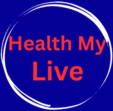
That sudden, sharp pain in your chest. It hits you like a bolt, stealing your breath and instantly flooding your mind with worry: “Is this it? Is this a heart attack?” Or maybe it’s just that burrito you had for lunch staging a rebellion? Distinguishing between the terrifying specter of a heart attack and the often excruciating but usually harmless discomfort of gas pain is one of the most common and crucial medical dilemmas people face. Getting it wrong can have devastating consequences. This guide dives deep into the distinct worlds of these two conditions, empowering you with the knowledge to understand their differences, recognize the critical warning signs, and make informed decisions about your health.
Understanding the Culprits: Two Very Different Origins
First, let’s be crystal clear: a heart attack and gas pain stem from fundamentally different problems within your body.
- Heart Attack (Myocardial Infarction): The Real Deal
- What Happens: A heart attack is a life-threatening medical emergency. It occurs when the blood flow to a section of the heart muscle is severely reduced or completely blocked. This blockage is usually caused by a blood clot forming on a ruptured plaque (a buildup of cholesterol, fat, and other substances) within one of the coronary arteries supplying the heart.
- The Consequence: Without adequate oxygen-rich blood, the affected heart muscle begins to die. The severity of the attack depends on how much muscle is damaged and how quickly blood flow is restored. Every minute counts. According to the American Heart Association (AHA), someone in the US has a heart attack approximately every 40 seconds.
- The Underlying Issue: This is a problem of blood supply to the heart itself, often rooted in coronary artery disease (CAD).
- Gas Pain: The Gut’s Protest
- What Happens: Gas pain arises from the buildup of air or gas within your digestive system, primarily the stomach or intestines. This gas can come from swallowed air (aerophagia, common when eating quickly, chewing gum, or drinking carbonated beverages) or the natural fermentation process performed by gut bacteria breaking down undigested food (especially high-fiber foods, beans, certain vegetables, and artificial sweeteners).
- The Consequence: As gas accumulates, it stretches the walls of your stomach or intestines. This stretching activates pain receptors, leading to discomfort ranging from mild bloating and pressure to intense, sharp, or cramping pains. It’s essentially your digestive tract saying, “I’m full of air and need to release it!”
- The Underlying Issue: This is a problem of digestion and gas movement within the gastrointestinal tract. While painful and disruptive, it is generally not life-threatening.
Decoding the Symptoms: A Side-by-Side Comparison
While both can cause chest discomfort, the nature, location, associated symptoms, and patterns often differ significantly. Paying close attention to these details is crucial.
| Feature | Heart Attack Pain | Gas Pain / Digestive Discomfort |
| Primary Origin | Heart Muscle (lack of blood flow) | Stomach or Intestines (gas buildup) |
| Pain Quality | Pressure, squeezing, fullness, tightness, heaviness. Often described as “an elephant sitting on my chest.” Can be severe, crushing, or a deep ache. | Sharp, stabbing, cramping, spasm-like. Can also be a general feeling of bloating or intense pressure. Often feels more superficial. |
| Pain Location | Central or left-sided chest, often radiating to jaw, neck, shoulder(s) (especially left), arm(s) (especially left), or back (between shoulder blades). | It can be anywhere in the abdomen or chest. Often upper abdomen (just below breastbone/epigastric), but can be lower or feel diffuse. Rarely radiates significantly beyond the core torso. |
| Onset & Duration | Often builds gradually over minutes, though it can be sudden. Pain is persistent, typically lasting more than a few minutes (often 15- 20+ mins), and doesn’t resolve quickly with positional changes or belching. | It can come on suddenly or gradually. Often intermittent or colicky (comes in waves). May resolve relatively quickly (minutes) with belching, passing gas, bowel movement, or changing position. |
| Triggers/Alleviators | Not reliably triggered or relieved by specific movements, food, or GI actions. Rest doesn’t typically help. | Often triggered by eating specific foods (fatty, gassy), swallowing air, or stress. Often relieved by belching, passing gas, having a bowel movement, moving/walking, or changing position (e.g., curling up). |
| Associated Symptoms | Shortness of breath (at rest or with minimal exertion), cold sweat, nausea/vomiting, lightheadedness/dizziness, sudden overwhelming fatigue, anxiety/impending doom. Paleness. | Belching, flatulence (passing gas), bloating, abdominal distension (visible swelling), rumbling stomach (borborygmi), heartburn/indigestion sensation, possibly mild nausea. |
| Response to Activity | Pain often worsens with physical exertion (even mild activity like walking across a room) or emotional stress. | Pain may improve with movement (like walking) which can help move gas, or worsen with certain positions that put pressure on the abdomen. |
This cannot be overstated: If you experience symptoms suggestive of a heart attack, do not delay seeking emergency medical help. Do not try to self-diagnose or “wait and see.” Err on the side of caution. Here are the hallmark signs that demand immediate action:
- Chest Discomfort: Especially pressure, squeezing, fullness, or pain in the center of your chest that lasts more than a few minutes or goes away and comes back.
- Pain Radiating Elsewhere: Discomfort or pain spreading to one or both arms, your back, neck, jaw, or stomach.
- Shortness of Breath: With or without chest discomfort. Feeling like you can’t catch your breath.
- Cold Sweats: Breaking out in a cold sweat for no apparent reason.
- Nausea or Vomiting: Especially when combined with any of the above.
- Lightheadedness or Dizziness: Feeling faint or like you might pass out.
- Overwhelming Fatigue: Sudden, unusual, and extreme tiredness.
- Sense of Impending Doom: A profound feeling that something is terribly wrong.
Dr. Sarah Johnson, a cardiologist at Massachusetts General Hospital, emphasizes: “Time is muscle. The longer a heart attack goes untreated, the more heart muscle dies, leading to greater complications and a higher risk of death or long-term heart failure. If you have any doubts, get checked out immediately. It’s far better to have a false alarm than to ignore a real heart attack.”
Why Gas Pain Can Mimic a Heart Attack (and Vice Versa)
The confusion arises because nerves in the chest and upper abdomen don’t always provide precise “maps” to the brain. This phenomenon is called referred pain. Pain originating in the heart can be felt in areas like the jaw, neck, arm, or upper abdomen. Conversely, intense gas pain or severe heartburn (GERD) originating in the esophagus or stomach can radiate upwards into the chest, mimicking cardiac pain.
Furthermore, conditions like esophagitis (inflammation of the esophagus), esophageal spasm (intense, abnormal squeezing of the esophagus), or even gallstones can cause severe upper abdominal or chest pain that feels alarmingly similar to a heart attack. Panic attacks can also produce chest tightness, shortness of breath, sweating, and a feeling of doom, closely mirroring heart attack symptoms.
The Diagnostic Challenge: How Doctors Tell Them Apart
If you go to the ER or your doctor with chest pain, they take it very seriously. Here’s what you can expect:
- Detailed History: This is paramount. The doctor will ask you to describe the pain in detail (location, quality, intensity, duration), what makes it better or worse, associated symptoms, your medical history (especially heart disease, diabetes, high blood pressure, high cholesterol), family history, smoking status, and any recent triggers (like a large meal or stressful event).
- Physical Examination: Checking your vital signs (blood pressure, heart rate, temperature, breathing rate), listening to your heart and lungs, examining your abdomen for tenderness or distension.
- Electrocardiogram (ECG/EKG): This is often done immediately in an emergency setting for chest pain. It records the electrical activity of your heart and can reveal patterns indicating a current or recent heart attack, or other heart problems like arrhythmias.
- Blood Tests (Cardiac Biomarkers): When the heart muscle is damaged (like in a heart attack), it releases specific proteins (like troponin) into the bloodstream. Blood tests can detect these markers, usually requiring serial tests over a few hours as levels rise after damage occurs.
- Chest X-ray: Helps assess heart size and look for lung problems (like pneumonia or a collapsed lung) that could cause chest pain.
- Other Tests (Depending on Suspicion): These might include an echocardiogram (ultrasound of the heart), stress test, CT scan (including specialized coronary CT angiography), or endoscopy (to look at the esophagus and stomach) if a gastrointestinal cause is strongly suspected.
The “Better Safe Than Sorry” Principle: Case in Point
Consider “Michael,” a 55-year-old with a desk job and a fondness for spicy foods. One evening after a large meal, he experienced intense, burning chest pain and pressure. He initially dismissed it as severe heartburn, took antacids, and went to bed. The pain eased slightly but returned intermittently through the night. By morning, feeling unusually fatigued and slightly nauseous, he finally went to the ER. An ECG and elevated troponin levels confirmed he had suffered a heart attack hours earlier. Delayed treatment meant more heart muscle damage than if he had sought help immediately when the classic “pressure” pain first hit. Michael’s story underscores the vital importance of not assuming chest pain is “just gas” or “just heartburn,” especially with risk factors or concerning symptoms.
Managing Gas Pain: Finding Relief
If gas pain is the culprit, several strategies can help:
- Over-the-Counter Remedies: Simethicone (Gas-X, Phazyme) helps break up gas bubbles. Antacids can help if acid reflux is contributing. Digestive enzymes (like lactase for dairy intolerance or alpha-galactosidase for beans/veggies – Beano) can aid digestion.
- Dietary Adjustments: Identify and limit trigger foods (common culprits include beans, lentils, broccoli, cabbage, onions, carbonated drinks, artificial sweeteners, fatty foods). Eat slowly, chew thoroughly, and avoid swallowing excess air (limit gum, hard candies, drinking through straws).
- Movement: Gentle walking or specific yoga poses (like knees-to-chest) can help stimulate gas passage.
- Hydration: Drinking water helps move food through the digestive tract.
- Heat: A warm heating pad on your abdomen can relax muscles and ease cramping.
- Probiotics: May help regulate gut bacteria and reduce gas production over time for some people.
Prevention and Proactive Heart Health
While you can’t always prevent gas (it’s a natural byproduct of digestion!), mindful eating and identifying triggers can minimize episodes. Preventing heart attacks, however, involves significant, proactive lifestyle management:
- Know Your Numbers: Regularly monitor and manage blood pressure, cholesterol levels, and blood sugar (if diabetic).
- Don’t smoke: Smoking is a major risk factor for heart disease.
- Eat Heart-Healthy: Focus on fruits, vegetables, whole grains, lean proteins, and healthy fats (like olive oil, avocados). Limit saturated fats, trans fats, sodium, and added sugars.
- Exercise Regularly: Aim for at least 150 minutes of moderate-intensity aerobic activity per week.
- Maintain a Healthy Weight.
- Manage Stress: Chronic stress can negatively impact heart health. Find healthy coping mechanisms.
- Limit Alcohol.
- Know Your Family History: Discuss it with your doctor.
- Attend Regular Check-ups: Especially if you have risk factors.
Understanding Atypical Presentations
It’s crucial to note that not everyone experiences a “textbook” heart attack. Women, older adults, and people with diabetes are more likely to have atypical symptoms, which may include:
- Shortness of breath without significant chest pain.
- Unexplained nausea or vomiting.
- Pain is primarily located in the back, shoulders, or upper abdomen.
- Extreme, unexplained fatigue.
- Lightheadedness or fainting.
These presentations can be easily mistaken for indigestion, the flu, or simply “feeling run down,” further highlighting the need for awareness and caution.
